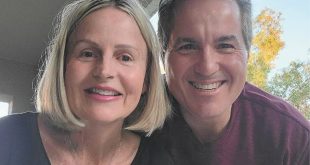
To alleviate your pain and get you back to doing what you love, the board-certified, fellowship trained physicians at Sforzo | Dillingham | Stewart Orthopedics + Sports Medicine specialize in both non-surgical and surgical treatment for the shoulders, hand, wrists, elbows, hips, knees, ankles, spine and neck. Additionally, the doctors offer the latest in biologic regenerative medicine injections and regenerative treatments helping many patients eliminate the need for surgery. Not all patients require surgical intervention, many can be treated with conservative approaches and physical therapy.
In-House Physical Therapy Department
Today more than ever, Sforzo | Dillingham | Stewart Orthopedics + Sports Medicine’s personalized level of care is their top priority. Therefore, they set a high standard of patient care for their in-house physical therapy department. The ability to communicate daily with their physical therapists and clinicians is ideal in orthopedic patient care. Having the in-house physical therapy department allows the physicians to have insight and control over the advanced treatment their patients need and specifically design the best program for recovery.
Always on the leading edge of the most innovative treatment options, Sforzo | Dillingham | Stewart Orthopedics + Sports Medicine’s physical therapy department and staff offer the most advanced treatment and therapeutics for their patients.
Along with numerous treatment options, two advanced Physical Therapy methods are Blood Flow Restriction Therapy and Dry Needling.
Blood Flow Restriction
After surgery and musculoskeletal injuries, the standard targeted therapy must be designed to provide optimal healing to the area. While physical strength training is the key to maintain muscle mass, range of motion, and flexibility, it needs to be tailored to the patient with careful therapeutic programs.
High-intensity training is the best way to build muscle and strength, but this is obviously not recommended with injuries or post-surgery. Lower load exercise is not intense enough to induce a hypertrophic strength-building effect. However, an advanced method the practice has implemented is therapy known as BFR (Blood Flow Restriction), which provides the results of high-intensity training without the risk.
To build strength, studies have shown that heavier loads as high as 70-80% of one-repetition maximum must be lifted, but with BFR training, only 20-30% of one-repetition maximum is needed to improve strength and muscle size within a shorter time period, which means that patients can build their strength and muscle size back quicker, without putting unnecessary stress on the area, which avoids potential injury.
During BFR, the blood flow is impeded with a device that is similar to a blood pressure cuff. The physical therapist precisely monitors the area while the patient performs low-intensity exercises. The BFR unit restricts the vessels with a high enough pressure to decrease venous return but also allows adequate arterial blood flow. It is never cutting off circulation or blood flow, and it should only be performed under the supervision of a highly trained clinician who will measure the blood flow occlusion and other intricate variables.
Using BFR in therapy after an injury or post-operative surgery can speed up recovery time while decreasing muscle loss. Along with building muscle strength, it also induces Vo2Max (volume, oxygen maximum uptake). Vo2 is critical for cardiovascular strengthening. The Journal of Sports Science and Medicine published a recent study on the effects of Blood Flow Restriction and Vo2. They reported that BFR combined with low-level biking exercise increased muscle oxygen levels, cardiovascular uptake, and muscle mass within a short duration of only 15 minutes. Short-duration exercise combined with BFR improves both muscle hypertrophy and aerobic capacity.
Study Results
• Muscle volume increased 3.4 – 5.1%
• Strength increased by 7.7%
• Vo2Max increased by 6.4%
PRP and BFR
Several studies purport that Blood Flow Restriction increases metabolites such as CD34+ stem cells, platelets, white blood cells, neutrophils, lymphocytes, lactate, and glucose in the blood. Due to these findings the doctors recommend PRP (Platelet Rich Plasma) Therapy in combination with BFR to increase blood plasma and stem cell proliferation and intensify optimal healing.
Dry Needling
Dry Needling is another advanced procedure the practice includes in treatment programs. Dry Needling is performed by certified and highly trained physical therapists. Similar to acupuncture in the insertion of tiny microfilament needles, it is not the same concerning outcome or procedure goals.
Muscle fibers that have contractions or tight bands decrease range of motion and permeate pain and soreness. This is known as trigger points, which disrupt functionality. Dry needling is well known to increase blood flow, reduce pain and increase range of motion, and it can be used for numerous musculoskeletal and neuromuscular conditions. Physical Therapists need to take an extended course in dry needling and are certified to perform the technique. After evaluation and testing, the therapist will design a treatment plan specific to the patient.
Depending on the severity of the area that needs treatment, the needles can be inserted for a few minutes to approximately 15 minutes at a time. The insertion is not very deep, and again, the needles are fine gauge, so there is usually minimal to no discomfort. It can be used in conjunction with other therapeutics to increase healing.
Sforzo | Dillingham | Stewart Orthopedics + Sports Medicine’s
941.378.5100
SFORZODILLINGHAM.COM
5831 Bee Ridge Road, Suite 300, Sarasota, Florida 34233
Source: https://www.ncbi.nlm.nih.gov/pmc/articles/PMC3761718/
 Southwest Florida's Health and Wellness Magazine Health and Wellness Articles
Southwest Florida's Health and Wellness Magazine Health and Wellness Articles

